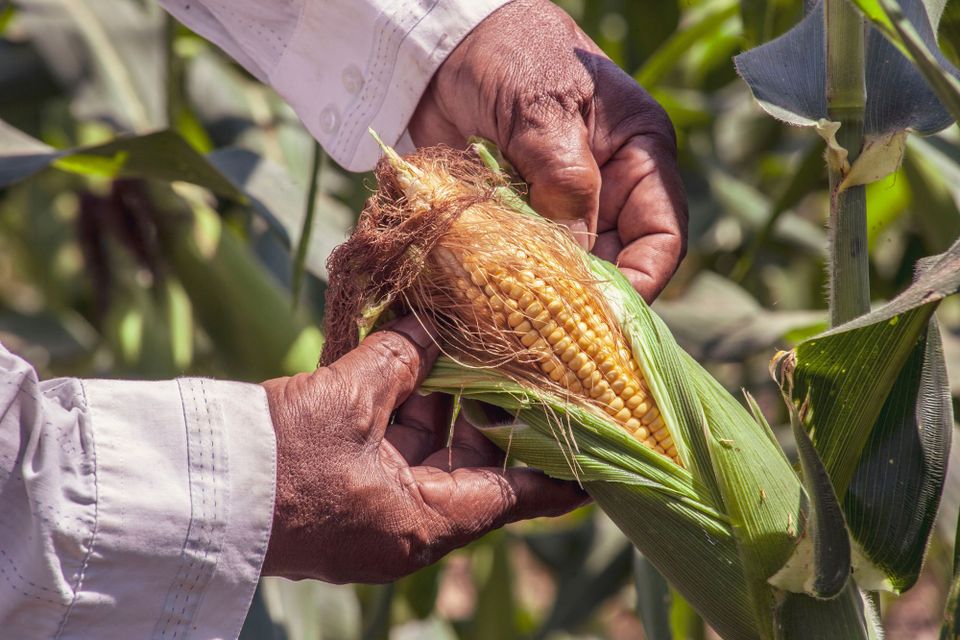Corn as a Staple Diet

Scientists believe people of Central Mexico developed corn approximately 7000 years ago, and that it all began with a wild grass plant found in Mesoamerica called Teosinte. In the Americas, corn was known to be the mother of agriculture, from which it spread throughout the world as time went on.
It was the dawn of agriculture. Certain plants and animals were being domesticated and rather than hunting and gathering, people started to produce their own food.
Corn was originally domesticated in Mexico by Native Americans some 9,000 years ago, however, nowadays corn is used as livestock feed, human food, biofuel, and raw material in the industry. Though, the corn that we have come to know today would not have existed if humans had not cultivated and developed the crop. It is a crop that has essentially been invented by humans because, without human protection and attention, the plant will not be able to survive.
As previously mentioned, Corn started its journey from teosinte, a wild grass, however, today’s corn looks significantly different from teosinte. Unlike kernels on the husked ear of modern corn, the kernels were not placed in proximity and were smaller in size and barely edible. However, unlike its seeds, the husk of the plant is versatile.
Over the next 4,700 years, farmers started breeding the plant into a staple crop, which resulted in larger cobs and edible kernels. The invention spread throughout North and South America, the Native Americans became dependent on corn, or Maize as they referred to it, for the majority of their food. Interestingly, multiple indigenous communities referred to the crop as “Corn Mother”, the goddess, who created agriculture; corn had evidently taken on a very important role. The use of Maize also travelled north from Mexico, into the southwestern United States and the coast to Peru.
At first, when maize was introduced to the Europeans, it was shunned and regarded as a strange plant, which reflected cultural differences between them and the Native Americans. However, as time progressed, the European settlers had no choice but to diversify their diets and grow to appreciate and enjoy the crop, especially since the American soil was not fertile enough for European crops.
Once they grew accustomed to the ‘foreign’ crop, the Native Americans taught the people of Europe how to grow the indigenous grain. Ever since Christopher Columbus and the other explorers brought the crop back into Europe, the use of maize has spread worldwide. Given its ability to grow in diverse climates. Although, the title ‘Corn Capital of the World’ still belongs to the newly established United States of America (USA).
In the early 1800s different regions across America began to produce different variations of corn based on size and taste. However, in the 1850s the production of all these unique assortments of the crop became so large that packaging them became difficult. It also became hard for traders to sell the item, so corn farmers were encouraged by trade boards to breed a standardized form of corn. This was accomplished when James Reid’s yellow dent corn won the blue ribbon at 1893’s World’s Columbian Exposition. Over the next 50 years, yellow dent corn dominated the nation.
Mechanized harvesters became widely available, which enabled farmers to harvest the crop at a faster rate, moreover, the chemical explosive used during the war; Ammonium Nitrate, was used as a fertilizer, so that the farmers would not have to rotate their crops or replenish nitrogen into the soil. However, to ensure revenue was high, US agricultural policy limited the number of corn farmers could grow. However, these limitations were removed in 1972 by President Richard Nixon and a new trade deal made in 1972.
Now, corn is a staple food in many countries and for many cultures.
References
The Story of Corn - History Detective - In the Beginning (campsilos.org)Corn | History, Cultivation, Uses, & Description | Britannica
Maize - Wikipedia
The history of the world according to corn - Chris A. Kniesly
Author biography
Zaisha Leem Ibrahim was born in 2008 in Male’, the Maldives and currently lives in Hulhumale', the Maldives, with her family. She has graduated from 7th grade and now is going to go into the 8th grade. Zaisha likes reading fantasy and mystery adventure stories and watching investigative documentaries. She is generally drawn into anything that requires problem solving.

Cite this article as:
Zaisha Leem Ibrahim, Corn as a Staple Diet, theCircle Composition, Volume 1, (2021). https://thecirclecomposition.org/corn-as-a-staple-diet/
